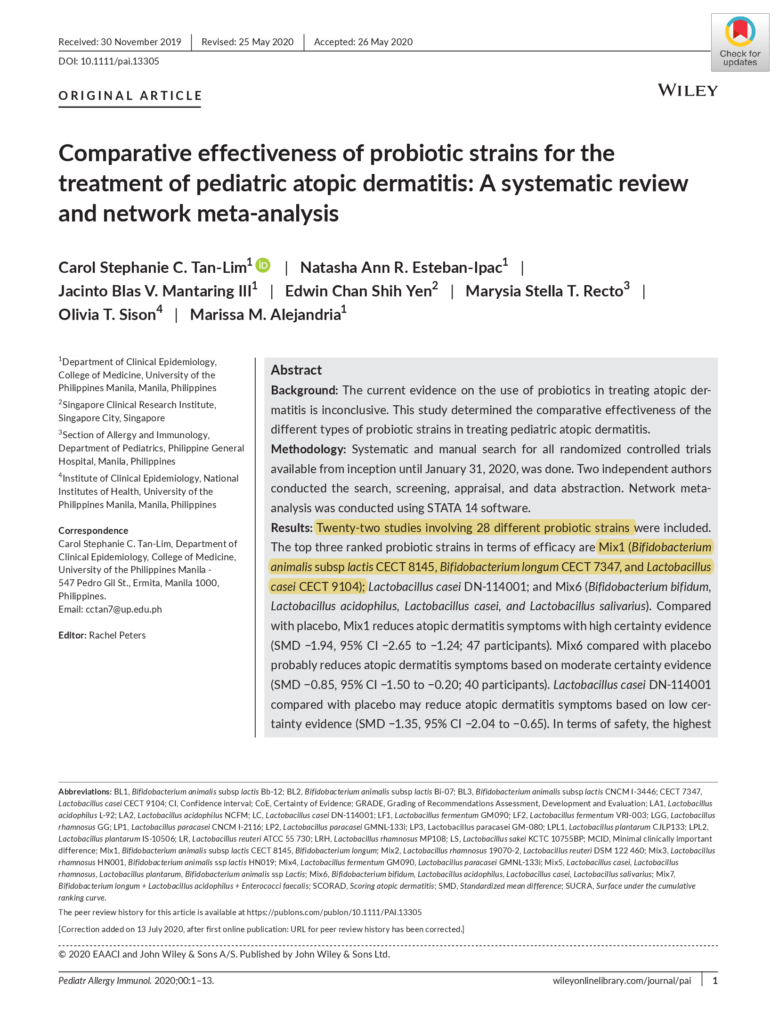
Comparative effectiveness of probiotic strains for the treatment of pediatric atopic dermatitis: A systematic review and network meta-analysis

Background: The current evidence on the use of probiotics in treating atopic dermatitis is inconclusive. This study determined the comparative effectiveness of the different types of probiotic strains in treating pediatric atopic dermatitis.
Methodology: Systematic and manual search for all randomized controlled trials available from inception until January 31, 2020, was done. Two independent authors conducted the search, screening, appraisal, and data abstraction. Network meta-analysis was conducted using STATA 14 software.
Results: Twenty-two studies involving 28 different probiotic strains were included. The top three ranked probiotic strains in terms of efficacy are Mix1 (Bifidobacterium animalis subsp lactis CECT 8145, Bifidobacterium longum CECT 7347, and Lactobacillus casei CECT 9104); Lactobacillus casei DN-114001; and Mix6 (Bifidobacterium bifidum, Lactobacillus acidophilus, Lactobacillus casei, and Lactobacillus salivarius). Compared with placebo, Mix1 reduces atopic dermatitis symptoms with high certainty evidence (SMD −1.94, 95% CI −2.65 to −1.24; 47 participants). Mix6 compared with placebo probably reduces atopic dermatitis symptoms based on moderate certainty evidence (SMD −0.85, 95% CI −1.50 to −0.20; 40 participants). Lactobacillus casei DN-114001 compared with placebo may reduce atopic dermatitis symptoms based on low certainty evidence (SMD −1.35, 95% CI −2.04 to −0.65). In terms of safety, the highest ranked strain is Lactobacillus fermentum VRI-003, while the lowest ranked strain is Lactobacillus rhamnosus GG.
Conclusion: Certain probiotic preparations show benefit in reducing allergic symptoms in pediatric atopic dermatitis.
Read the complete study at Wiley Online Library
References:
Kim, S.-O., Ah, Y.-M., Yu, Y. M., Choi, K. H., Shin, W.-G., & Lee, J.-Y. (2014). Effects of probiotics for the treatment of atopic dermatitis: a meta-analysis of randomized controlled trials. Annals of Allergy, Asthma & Immunology;113(2); 217–226.
